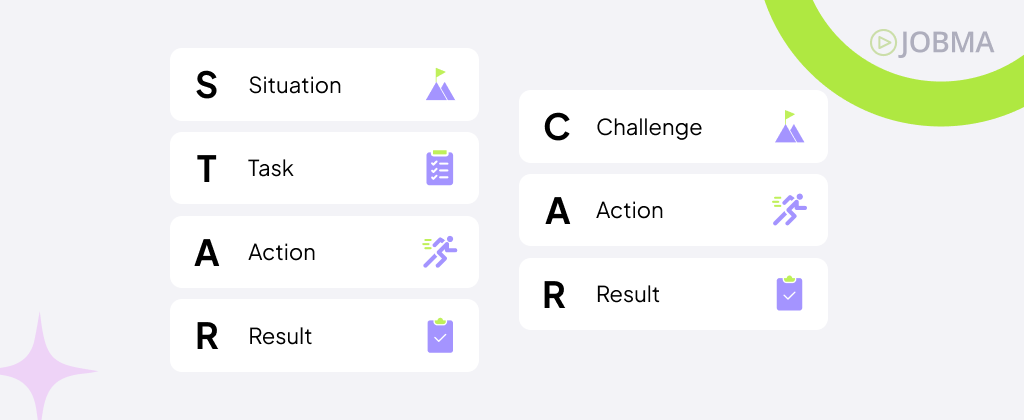The Hidden Link Between Resume Quality and Interview Confidence
To most job seekers, resumes and interviews seem like two radically different beasts. The resume is static, carefully crafted, and polished over time. An interview, on the other hand, is dynamic and unpredictable, you must think on your feet, answer questions under pressure, and establish rapport in real time.
It’s easy to assume that the two processes are separate. Some candidates even feel that they’re better at one than the other. For example, a candidate may dislike writing resumes but enjoy conversation, or they may excel at writing resumes but feel nervous when speaking. But the truth is that the quality of your resume and the confidence you project in your interview are deeply interconnected. Modern candidates even enhance their profiles by adding a resume QR code, making it effortless for recruiters to access portfolios, LinkedIn pages, or video introductions in one scan.
Why Resume Quality Impacts Interview Confidence
Your resume is not just a ticket to get the interview, it’s also the foundation of your interview performance. Here’s why:
- Mental Rehearsal: Writing a strong resume forces you to reflect on your accomplishments, quantify your achievements, and frame your experiences in the STAR (Situation, Task, Action, Result) or CAR (Challenge, Action, Result) formats. This process naturally prepares you to recall these stories when asked behavioral questions in an interview.
- Consistency Builds Trust: Interviewers often use your resume as their starting point. If you’ve structured it well, your answers during the interview will feel consistent and authentic rather than scattered or improvised.
- Tailoring Equals Preparedness: A tailored resume shows you’ve studied the job description and company. That preparation boosts your confidence because you’ll already know the employer’s priorities and be ready to speak to them.

In short, an intentional resume does more than secure an interview, it equips you with the language, examples, and confidence you’ll need when answering tough questions.
Here’s how you can ace both your resume and interview:
Step 1: Polish Your Resume
Every job you apply for is different, even if the job titles sound similar. To prove you’re the right fit, you need to customize your resume for each role.
Adjust Resume Keywords with Intention
Employers often use Applicant Tracking Systems (ATS) to scan resumes. Using advanced tools to help job applicants get more interviews is becoming essential. Many candidates even use platforms like Rezi.ai to automatically optimize their resumes for ATS keywords, ensuring their skills and experience match the language employers are actually scanning for. For example:
- If the job description says “customer engagement” but your resume says “client relations,” revise your phrasing to match.
- Swap “data reporting” for “data analytics” if that’s the term the employer uses.
- If the posting emphasizes “project leadership,” make sure your bullet points highlight leadership experiences, not just participation.
Reorder and Highlight the Right Content
Recruiters typically spend only a few seconds scanning a resume before deciding whether to keep reading. This means the order in which you present your information can directly impact how your experience is perceived. So, your resume should spotlight the most job-relevant experiences, skills, or results in each section.
- For a marketing role, place campaign results, content metrics, and brand growth achievements at the top of each role. For example, lead with a bullet like, “Increased social engagement by 45% through multi-platform content campaigns,” before mentioning daily responsibilities.
- For a technical role, prioritize core competencies, such as software languages, system design, or troubleshooting successes, above soft skills or administrative tasks. Recruiters want to see your technical impact first.
- If you’re changing careers, highlight your transferable skills, like leadership, data interpretation, or communication, before unrelated past job details. Create a “Key Skills” or “Relevant Experience” section near the top to ensure hiring managers immediately recognize your fit, even if your previous titles don’t directly match the new field.
Apply STAR or CAR in Resume Bullets
Recruiters want to know what you did, how you did it, and what results you achieved. Instead of writing vague bullets like “Managed projects for cross-functional teams,” frame them with STAR or CAR.

For example:
- STAR Method: Led a cross-functional team of six (Situation/Task), implemented a new workflow tool (Action), reducing project delays by 30% (Result).
- CAR Method: Faced high employee turnover (Challenge), launched a mentorship program (Action), which improved retention by 18% (Result).
The key is to focus on outcomes, not just activities. Use metrics, like percentages, time saved, revenue gained, or satisfaction improved, to quantify your achievements. If you can’t use numbers, describe results in qualitative terms like “enhanced client satisfaction,” “strengthened team collaboration,” or “streamlined operations.” Each bullet you write now becomes a ready-made story you can confidently expand later in an interview, ensuring consistency.
Step 2: Build Your Confidence
Your resume preparation naturally provides you with “interview ammo”, but you must practice delivering it with confidence. To ensure that you don’t stumble or struggle to recall your experiences in an organized way, follow the STAR and CAR method you’ve already applied in your resume. The more familiar you are with your own career stories, the challenges you faced, the actions you took, and the results you achieved, the less nervous you’ll be for behavioral or situational questions.
Practice Behavioral Questions with STAR Stories
Interviewers frequently use behavioral questions to assess how you think, act, and solve problems in real-world situations. They’re designed to reveal your soft skills, like leadership, adaptability, and communication. Here’s how your resume prep pays off:
Question: “Tell me about a time you failed and what you learned.”
Answer using STAR:
- Situation: “Early in my career, I was tasked with coordinating a product launch.”
- Task: “I underestimated the timeline and missed an internal deadline.”
- Action: “I immediately met with stakeholders, reworked the schedule, and introduced weekly check-ins.”
- Result: “The product still launched successfully, and the new process reduced errors by 20% for future launches.”
This not only makes the answer sound clear and structured, but also ties it to a real example.
To strengthen your preparation:
- Practice aloud in front of a mirror or record yourself to assess tone, pacing, and clarity.
- Keep answers between 1-2 minutes. Long enough to convey context, but concise enough to hold attention.
- Prepare at least five STAR stories that showcase a mix of leadership, teamwork, conflict resolution, and achievement, so you can adapt them to different questions on the fly.

Use Technology to Simulate Interviews
Technology plays a prominent role in interviews. Your recruiter may also be using the latest tools, like AI-driven evaluators and virtual interview platforms, to conduct the interview and evaluate your performance. So, it’s important to familiarize yourself with these technologies and build confidence using similar tools during your own preparation.
- AI Chat Tools: Tools like ChatGPT or Google Gemini can act as virtual interviewers. You can provide the job description, ask them to generate relevant interview questions, and then practice answering either by typing or speaking. These tools also give suggestions for improving your responses, helping you identify areas to clarify or strengthen before the real interview.
- Interview Prep Platforms: Platforms such as MyJobma or Big Interview take practice a step further by using AI-powered avatars or video simulations. You can record yourself answering questions, and the system analyzes your tone, pacing, filler words, and body language. This type of feedback gives you a sense of how you come across to interviewers, allowing you to make adjustments in a safe, private environment.
- Mobile Apps: Apps like Interview Warmup (by Google) offer industry-specific practice questions and provide keyword-based feedback. This helps you refine the language you use to describe your skills, ensuring your answers are both clear and aligned with what employers are looking for.
When you’re familiar with the types of questions you’ll face and how to respond, it naturally reduces anxiety and helps you project confidence where it counts.
Step 3: Perform with Presence
Even with a polished resume and practiced answers, your presence during the interview matters. Presence conveys confidence, professionalism, and readiness. Here’s how to prepare:
- Research the Company and Role Thoroughly: Don’t just skim the “About Us” page, read recent press releases, check their LinkedIn activity, and review employee reviews on sites like Glassdoor. Knowing the company’s culture, goals, and challenges allows you to tailor responses and ask smart questions.
- Visit (or visualize) the Interview Setting: If the interview’s in-person, visit the location so you know the commute time and route. If it’s virtual, test your equipment, background, and lighting. This prevents last-minute stress.
- Dress with Intention: Dressing appropriately signals professionalism and boosts confidence. Business casual is typically safe, formal pants and a button-up shirt, or a professional blouse in neutral colors. When in doubt, check the company’s social media or LinkedIn profiles to understand their dress culture.
- Smile Authentically: Smiling signals confidence, but don’t force it. Practice relaxing facial expressions in front of a mirror or camera so you appear approachable without seeming nervous. Smiling also releases brain chemicals that calm anxiety.

- Breathe and Pause: If you’re hit with a tough question, take a deep breath and pause before responding. Interviewers won’t penalize you for taking a moment, it shows thoughtfulness and composure. Practice this pause in mock interviews.
- Project Confidence in Body Language: Maintain eye contact, keep your posture open (no crossed arms), and use hand gestures naturally. These cues reassure the interviewer that you’re comfortable and competent.
Key Takeaways
Your resume and your interview are not separate hurdles, they’re stages of the same performance. A strong resume doesn’t just land you the interview, it helps you prepare the stories, metrics, and examples that fuel your confidence when answering tough questions.
- A tailored, STAR-powered resume equips you with ready-made stories.
- Practicing with AI tools and mock interviews builds confidence in delivery.
- Preparing for presence and composure helps you shine when it matters most.
When you polish your resume, you’re also rehearsing for your interview. The more effort you put into connecting the two, the more likely you’ll walk into your next interview not just qualified, but confident and prepared to succeed.

Disclaimer: This article was authored by a guest contributor or third party. The views expressed are their own and do not necessarily reflect those of Jobma. Jobma does not endorse any products, services, or claims mentioned. This content is for informational purposes only.



